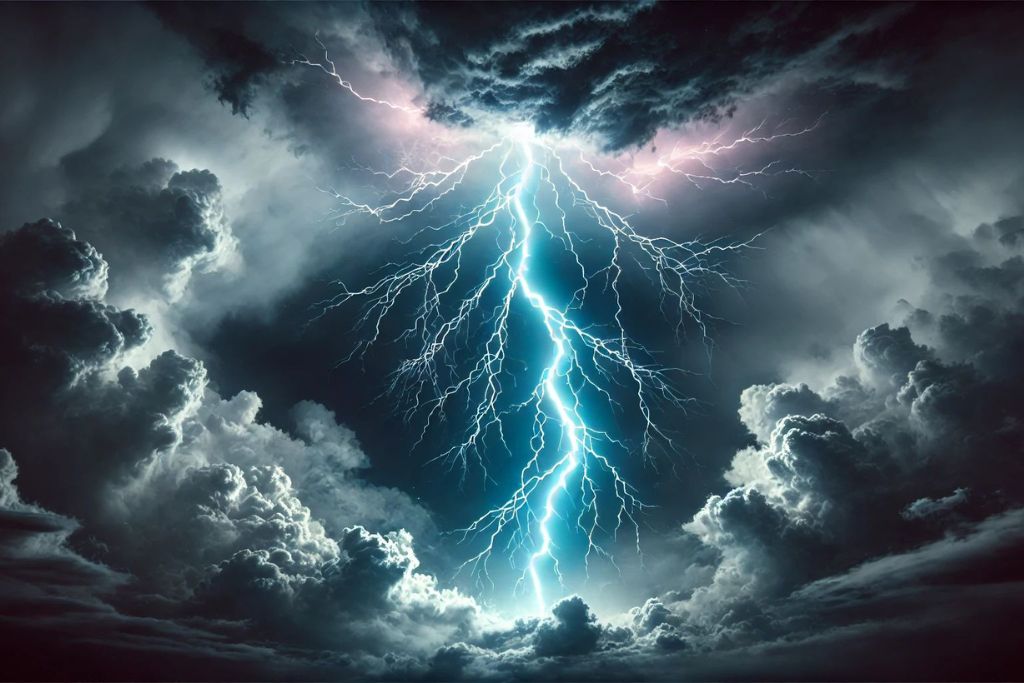In Today’s modern world, we are seeing technological advancement like we have never seen before as we are marching forward towards integrating Ai in our daily life. It will become very important to keep our critical business infrastructure like Data Warehouse, Servers and Power grid safe from natural calamities.
As natural hazards can damage our critical business infrastructure extensively, it becomes very important to ensure the safety of ourselves and our digital infrastructure. Among the various natural hazards like hurricanes, tsunamis, and earthquakes, today we are going to focus on the most destructive one, which is lightning.
Lightning is a very destructive force of nature, and it is quite capable of causing extensive damage to buildings and equipment and can even endanger our lives. That’s where the new technologies like Advances in Lightning Risk Assessment (LRA) are helping us to revitalize the safety strategies with the help of artificial intelligence (AI).
In this article, we will explore how Ai-driven softwares and technologies is helping us in accessing the lighting rise, and which makes the whole process of rise assessment a lot faster and more precise, so it can be used across various industries.
Why is it very important to assess the risk of Lighting Strike?
As we all know a single lightning strike can have severe consequences on,
Structural damage – Lightning Strike can cause destruction of buildings and potential fire hazards.
Economic impact – It can disrupt the business operation and can create a costly production downtime. It can also cause serious damage to high valve sensitive equipment.
Human risk – All the risk aside, it can be a lethal threat to the safety of employees and visitors.
The Ai driven advance risk assessment strategies can help us in identifying the vulnerabilities and recommend mitigation measures we should take to reduce the risk significantly.
The Traditional risk assessment strategy is a lot slower compared to the modern technologies like they heavily rely on manual calculation which are time consuming and are prone to human errors. The Ai driven risk assessment technology is much needed to safeguard our business in this technology driven world.
How Ai Based Software helps us in Lighting Risk Assessment?
Many people might have questions, how these AI driven platforms are able to make such an accurate prediction and risk assessment. So, Let’s learn how these systems operate:
1. Data Collection
The First steps of any AI driven software begins with data collection. The Ai based risk assessment software need to collect and process critical information like,
Weather conditions – frequency of thunderstorms, precipitation intensity, and atmospheric activity.
Geographical location – proximity to lightning-prone areas.
Building characteristics – structure type, material conductivity, and electromagnetic sensitivity.
2. Risk Analysis
This software runs various Ai simulations to mimic various lightning strike scenarios and assesses the probability and potential severity of damage.
3. Predictive Modeling
Once a data collection and processing is completed it runs a Machine learning algorithm to generate forecasts by identifying high-risk zones and estimating the timing of potential lightning events.
4. Report Generation
The system generates the interactive report featuring detailed risk assessments and actionable recommendations for risk mitigation.
What are the Key Benefits of AI in Lightning Risk Assessment?
Now, we have understood the working of Ai based Risk assessment system and it’s time to learn how it helps us in the time of crisis,
1. Enhanced Accuracy and Speed
The number one benefit of using Ai driven system is that AI can process large datasets within seconds, which can significantly reduce the time required to generate reports compared to manual calculations.
2. Personalized Risk Strategies
Unlike conventional methods, AI-based software adapts to the unique characteristics of each location and offers tailored protection strategies which are suitable for specific locations.
3. Real-Time Updates
One of the key advantages of using the Ai based systems is that Modern AI systems continuously update risk predictions based on real-time weather changes and infrastructure modifications.
4. Compliance with Industry Standards
Ai powered solutions can be used across various industries as these software adhere to international safety regulations, such as IEC 62305 and NFPA 780, ensuring industry-wide compliance.
AI in Action: Real-World Applications
Now, let’s see the real world of application of Ai powered risk assessment system specially for the lighting strike,
1. Energy and Renewable Resources
One thing we should make sure of is to protect our energy generation units as they are a backbone of our digital life. Wind farms and solar power plants are particularly vulnerable to lightning strikes. AI-driven risk assessment software can evaluate each turbine and solar panel, and can help us in minimizing potential damage.
2. Data Centers and Cloud Infrastructure
For companies which are heavily reliant on IT infrastructure, lightning-related disruptions can be catastrophic. That’s where applying AI-based LRA tools help us in protecting servers and network systems, preventing costly downtime.
3. Commercial Buildings
By applying the ai driven assessment system on the construction of Shopping malls, office buildings, and industrial complexes ensure the safety of employees, visitors, and business operations.
The Future of AI in Lightning Risk Assessment
The future of Ai in lighting risk assessment looks very bright as AI technology continues to evolve, which expands the capabilities of lightning risk assessment systems. The future will likely bring:
Cloud-Based Risk Analysis – The Cloud Based Risk Analysis will allow data integration from multiple sources to improve accuracy and prediction models.
Real-Time Response Mechanisms – By integrating real time data, help us in enabling immediate adjustments based on live weather conditions.
IoT Integration – connecting AI risk assessment with smart building monitoring systems for automated safety measures.
Closing Thoughts:
Artificial Intelligence and specialized software will start the new era of lighting risk assessment by enhancing speed, accuracy, and accessibility, these advanced tools help businesses mitigate risks effectively.

A computer engineer by day, gamer by night. He grew up playing Mario and contra, and just like every other 90s kid, he got passionate about mobile gaming. He had done bachelors in computer science and played fps and MOBA games for years.

